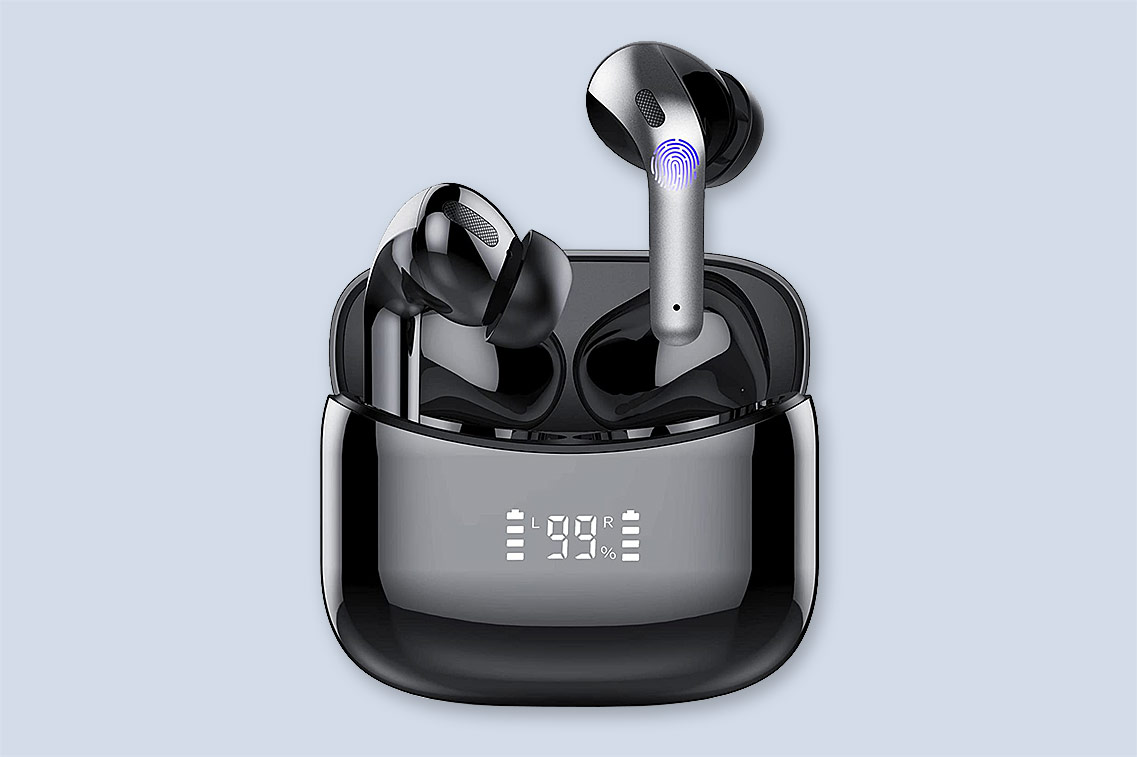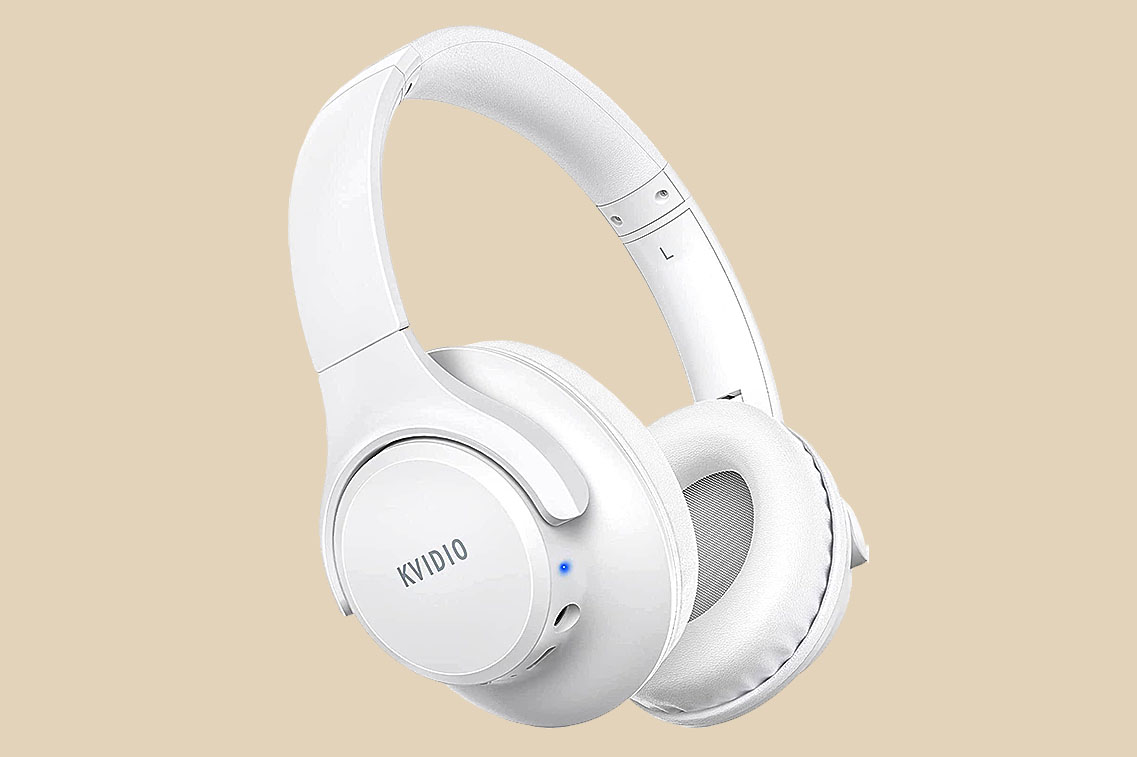The Swift Summary
Pros
Cons
- Decent 40 hour battery life
- Available in 6 colours
- Nicely balanced audio with 6 EQ modes
- Bluetooth 5.3 connectivity
- TF (SD) memory card slot
- Compact, folding design
- Comfortable ear cup padding
- Gloss plastic parts a little underwhelming
Full features list for the Lankey Sound 6S
- Bluetooth 5.3 connectivity
- Built-in microphone
- Up to 40 hours battery life (500mAh battery)
- 6 EQ modes (Bass, Jazz, Rock, Pop, Classic and Voice)
- 2.5 hr fast charging time
- Wireless or wired mode (comes with 3.5mm audio cable)
- FM radio
- Audio/calls control buttons
- Foldable design
- High definition audio
- Slot for TF memory cards (microSD / up to 32gb)
- 1 year warranty
Swift Thoughts
Design
The Lankey 6S over-the-ear headphones have a simple modern design. I especially like the smooth transition from headband to ear cup. The range of colours available is great and I’m sure will appeal to a broad range of customers. Personally, I feel the glossy plastic parts do cheapen the aesthetic somewhat though.
Some small gripes: I wish designers would dial back on unnecessary text on the headband. I don’t need constant reminding it’s a ‘wireless’ headphone once I own them. Also the L/R indicators for left and right ear cups would be better placed on the inside of the band.
Audio Performance
The audio performance is generally decent for such an affordably priced headphone. There is just the right amount of bass boost and treble delicacy to create a nicely balanced audio soundscape. Nothing exceptional, but more importantly no red flags to note.
I particularly like the different EQ options that re-balance the equalisation for different types of audio. You can cycle through 6 options: Bass, Jazz, Rock, Pop, Classic and Voice.
Build Quality
The 6S build quality is surprisingly good for the price. The headband has a decent amount of flexibility and the buttons and joints feel sturdy enough. As with most products in this price bracket, just a bit of extra care goes a long way to extend durability.
Comfort
The ergonomic design make these headphones a very comfortable choice, there’s plenty of padding in the soft protein leather ear cups.
As a wearer of glasses I found them very comfortable, even wearing for prolonged periods of time. Their lightness probably plays a major factor in this regard.
Functionality
The Lankey Sound 6S headphones come in a compact, smart-looking package. They come with the usual range of basic features, enough to satisfy the majority of customers. There’s plenty of battery life (40 hrs) for several days of listening between charges. You’ve got EQ audio balancing to appeal to bass-lovers, classic enthusiasts as well as podcast listeners. Plus there’s the usual external function buttons all in a neat, compact, foldable design.
Bonus features include FM radio and the TF/microSD card slot – a must-have option if you want a wireless experience without using Bluetooth – these customers must exist or why is this a thing?
Swift Scores
Design
Audio Performance
Comfort
Build Quality
Functionality
Battery Life
FAQs
Q: Does the mic work with online meeting apps, like Teams for example?
A: Yes.
Q: What is the maximum capacity for the SD card?
A: It’ll work with any TF / microSD card up to 32gb.
Q: Does it come with a charging cable, what type is it?
A: Yes, it comes with a standard USB type C cable. USB-C wall plug adapters and cable adapters are available separately if you don’t have a device with a USB-C port.
Q: Are they a folding headphone design?
A: Yes, both cups fold up (180°) to make them easier to transport.
Q: How do you pair the 6S headphones to a phone?
A: Turn on the headphones, put them into “pairing mode”, place near your Bluetooth device (making sure that Bluetooth is switched on). Then click on 6S on the Bluetooth settings page on your device to pair.
Q: Will they pair with my PS5?
A: You will need a separate Bluetooth dongle to connect them.
What’s in the box?
- Lankey Sound 6S Wireless Headphones
- User Manual
- 3.5mm audio cable with built-in mic
- Charging cable (USB-C)
You want it? We’ve found it.
Lankey Sound 6S is available in 5 colours: black/gold, black/blue, black/red, white/gold and white/rose gold.
Tech Talk
Bluetooth version 5.0 and beyond – what does it do?
Bluetooth is a type of wireless technology that helps one device pair with another in order for data (usually audio) to be transferred wirelessly.
You may have noticed a lot of products boast that they have Bluetooth version 5.0 (or higher) built-in. What’s so special about version 5.0? There have been many improvements within the technology over the years, but in brief Bluetooth 5.0 has these improvements over its predecessors:
- Improved reliability
- Extended range
- Faster data transfer speeds
Improved reliability means that a wireless connection is less likely to suddenly fail for no obvious reason.
Extended range means that a device will stay connected with its paired device across longer distances.
Faster data transfer speeds offers both higher quality audio as well as greatly reduced audio lag when watching video content.
Bluetooth version improvements: 5.3 versus 5.2 and 5.1.
With every new Bluetooth version release, incremental improvements are added to the overall Bluetooth experience. It’s important to remember that when you connect devices via Bluetooth, the device with the lower version will dictate (and limit) the features available. For example, if a Bluetooth device using version 5.3 connects to a device using 5.0, the connection will only be able to take advantage of 5.0 (or lower) features.
So what’s improved beyond Bluetooth version 5.0?
Bluetooth 5.1 saw improvements over 5.0 in the area of device location, particularly in regard to pinpointing with better accuracy the signal distance and direction.
Bluetooth 5.2 saw improvements in sound quality by using a new codec called LC3 (Low Complexity Communication). The codec improves the ability to compress and decompress transmitted data, especially to and from multiple devices.
Bluetooth 5.3 saw improvements in many smaller areas including: energy consumption, data security, bandwidth transitions etc. Higher bandwidth are needed, for example, when switching from listening to music and then making a phone call.








